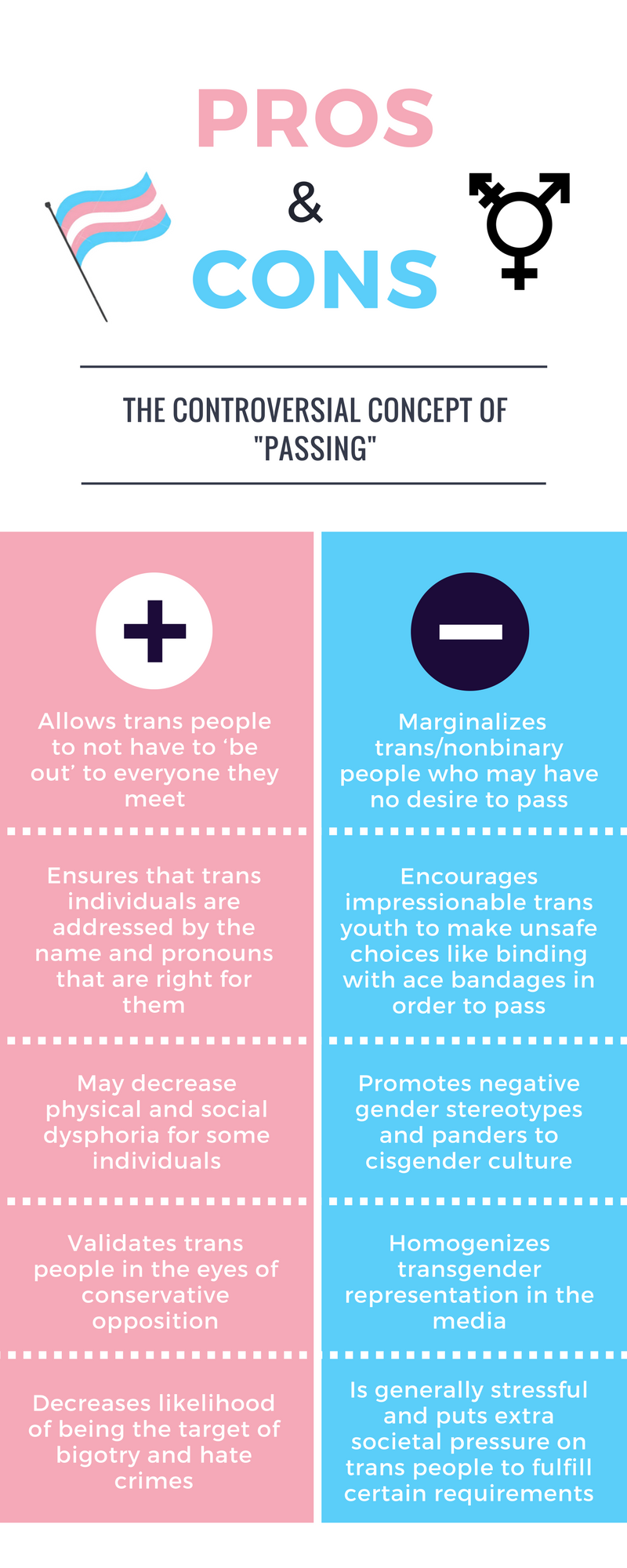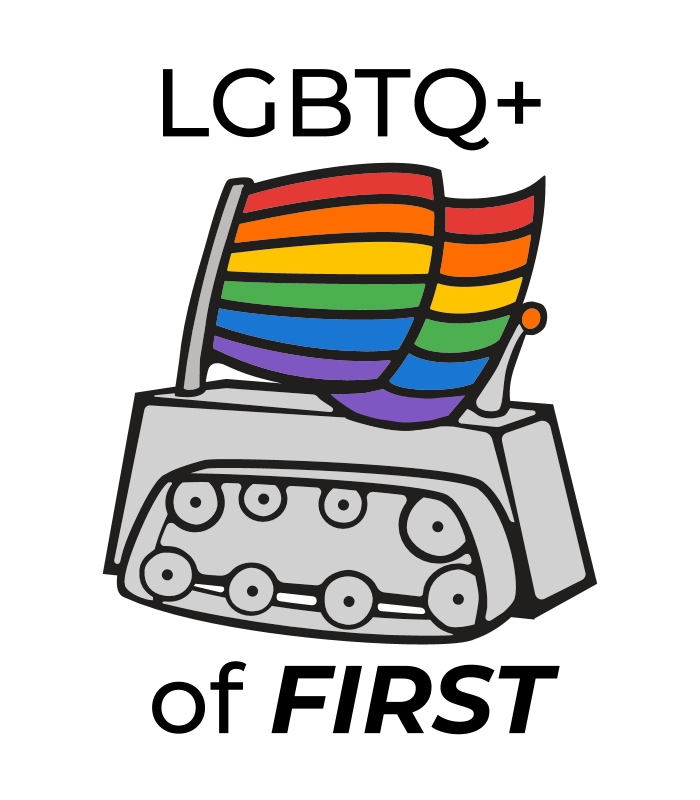|
So, it’s trans day of visibility. Obviously, there are a number of dates year-round that celebrate the queer community in some capacity; so many that some wonder why. I’d like to share a story to help people understand.
I was 16 years old, and only recently struggling with my identity. For the first time in a while, I was excited to “know” who I was, and ready to share it with someone. At my counselor’s office after school, I excitedly share the news: “I figured it out! I’m not a guy!” My excitement was not matched, as she gave me a look of shock and confusion. I don’t want to make this entirely about myself, so I’ll give the gist. The following weeks of therapy were extremely invasive and uncomfortable, to the point I simply refused to speak at times and leave after 5 minutes. We stopped shortly after as I pretended to be “better”. Much more harm than good was done in that period of time. My point is that people don’t understand trans people at the level they really should. Trans Day of Visibility is a day meant to promote that understanding. It’s for trans people to speak and have their voices heard. It’s important to acknowledge that for most trans people, their identity is not a choice. Gender Dysphoria (the condition that many trans people suffer from) is a painful neurological condition where one’s gender does not match their biological sex. It can only really be alleviated by gender affirming actions aesthetically, medically, socially, or in a variety of other ways. Even then, dysphoria is extremely limiting in many aspects of one’s life and never truly goes away. To make matters worse, trans people often face external barriers. These can manifest as “simpler” issues, such as the inability to find a bathroom they can use or gender affirming clothing that fits their body type. It can also appear as broader issues such as access to affirming care, employment opportunities, name changes, etc. The issues also extend into the abstract when social isolation, dissociation, and the ever-present feelings of not belonging are discussed. In addition, it’s not uncommon to face harassment, threats, or even violence for being trans just about anywhere in the world. As trans people face a cold and unkind world and likely will for years to come, change is happening. Where you are, it might not be legislative. It might not even be noticeable to most people, but it’s vital to creating a better future. At my most recent competition, my old marketing mentor didn’t know I was going by a new name and pronouns. When she accidentally greeted me with my deadname, my whole team (hailing from an extremely bigoted part of rural Indiana) all stepped in to correct her at once. You could look at the news and see all the legislation being passed to hurt trans people, but make no mistake, the humanity of most decent people will prevail as it always has throughout history. Looking at all this change, subtle as it may be, it gives me hope. While FIRST has a long way to go, the action they’ve taken and the environment they’ve created gives me hope. Seeing more people feeling ready to come out in spite of everything gives me hope. Not everyone can be visible today. Even within FIRST, many trans people are not able to live as who they truly are for a variety of factors. To them, I wish to say that we’re here, and we’re with you, no matter what team, nation, or culture you come from. It’s apparent in the pins, the pride flags, and representatives now being almost omnipresent at all FIRST events. I would like to thank you for reading this, and wish you a happy Trans Day of Visibility. - Eva True [Indiana] Hello everyone! First of all, happy Transgender Day of Visibility! I have not been a member of LGBTQ+ of FIRST for very long, but we are a very fun and accepting community. Today, being trans day of visibility, I and people everywhere are coming out and being visible. This day is wonderful because we are raising awareness and showing that there are strong, confident, and wonderful trans people all over the world in every skill and profession. I am so proud of every single one of you, closeted or out, questioning or positive, whoever you are. I am proud of you! You are strong! I would like to give a loud proud shoutout to all of the wonderful, smart transgender people of FIRST! You are all amazing people, you are very smart, and you are what makes FIRST, FIRST!
- Nia Ambassador, LGBTQ+ of FIRST Passing is the holy grail for many trans people, the almighty goal that they seek through the trials of transitioning. It is defined by the LGBT Resource Center at the University of Southern California as “successfully being perceived as a member of your preferred gender regardless of actual birth sex”, but the concept of passing is accompanied by controversy. It requires trans people to fit into a rigidly structured binary and fulfill gender stereotypes they may not wish to conform to, but it can also improve quality of life and keep them safe under circumstances where not passing would put them at risk. With both these arguments in mind, is the concept of passing helpful or harmful for the trans community? With regards to the earlier question, there is no clear answer. The concept of passing will remain controversial, and it is up to the individual whether or not they want to pursue it. Therefore, it’s important to remember that your perspective on passing does not hold true for everyone and that there are very distinct arguments on both sides. Like so many issues, it’s not a matter of black and white. Do what makes you feel the most comfortable, and respect the decisions of the people around you.
Have something to add to the conversation? Need some advice? Leave a comment below or tweet us at @LGBTQ_of_FIRST On May 20, 2017, STORM Robotics hosted its first annual FIRST Compass, an event where teams can give or watch presentations about different subjects in robotics. Representing LGBTQ+ of FIRST, Jaye and Sean presented this slide show to help teams in the MAR region and MAR itself learn how to be more inclusive to LGBTQ+ FIRST participants.
Since numerous teams seemed interested, LGBTQ+ of FIRST is sharing this presentation for all FIRSTers, especially those outside the MAR region and those who missed the event. Every LGBTQ+ students deserves a welcoming and inclusive environment. Ben Barres, formerly known as Barbara Barres, is a neurobiologist and a professor at Stanford University.
Born in 1955, he excelled in math and science at an early age. He attended MIT for his bachelor’s degree in Biology, Dartmouth for his medical degree, and Harvard for his PhD in Neurobiology. He transitioned in 1997. In 1993, he joined the faculty at Stanford. In 2008, he was appointed to the Chair of Neurobiology. His research is on the development and function of glial cells in the central nervous system. His research and teaching has won him many awards, such as the Life Sciences Research Fellowship, the Klingenstein Fellowship Award, a McKnight Investigator Award, a Searle Scholar Award, and the Kaiser Award for Excellence in Teaching. He has published many articles on his research and sexism in STEM. He is member of the American Association for the Advancement of Science. In 2013 he was elected to the US National Academy of Sciences, and was the first openly transgender member . Laurence Michael Dillon, America’s first medically transitioned transgender man, was born as Laura Maud Dillon. He was born as a healthy baby in 1915, but assigned female at birth. His mother died of complications after birth and his father died when Dillon was nine.
Dillon was a smart young man, and before Oxford was opened to women, he was told to apply. At Oxford, in order to earn a full degree, he had to dress like a man. It turns out that Dillon rather enjoyed dressing like a man, so he contacted a doctor who gave him testosterone pills. However, the doctor gossiped about him, causing his coworkers to find out about his assigned gender at birth and his transition. Dillon had to leave his job and move to escape the ridicule. “In 1943, Dillon met a plastic surgeon, one of the first in Britain, who had studied with the man who apparently invented plastic surgery, Harold Gillies. Dr. Gillies invented his surgical techniques while working on men who had been disfigured in World War I, people who had been injured in accidents … and on a certain number of people who either had been born with ambiguous genitals, or wanted sex-reassignment surgery. His disciple wrote Dillon a note that enabled him to change the name and sex listed on his identity documents (possibly before any surgery had been carried out) and passed him on to Dr. Gillies, who performed several surgeries on his chest and genitals over a number of years. In 1949 he became the proud new owner of an official penis. Ironically, the main purpose of this organ was to allow him to pass in those “public” situations where men are gathered together in the nude or semi-nude. It was not fully functional, and considering that men have a taboo against staring at each other’s equipment, one can’t help but wonder just how realistic it was. In any case, Dillon was happy. Temporarily.” [x] Dillon aided in the surgical transition of Roberta Cowell, Britain’s first transgender woman to undergo sex reassignment surgery. After he tried to receive his inheritance, he became a public figure. This caused him great mental strife and he left the country, moving to India. In India, he wanted to improve his mental discipline and he studied the Buddhist doctrine. There he learned that those of the “third sex” were not allowed in a particular monastery. However, he continued his spiritual journey and passed away from malnutrition on May 15, 1962. He was only 47. Dillon wrote two books, The Life of Milarepa, about a famous 11th Century Tibetan yogi, and Imji Getsul, a book about his life at the monastery. His struggles allowed for numerous scientific advances in transgender health. -Staff: Sean R 5113 (For those who want to read his book, Imji Getsul) |
About LGBTQ+ of FIRST
LGBTQ+ of FIRST is a student run organization that advocates awareness and acceptance of LGBTQ+ students, mentors, and volunteers of FIRST Robotics. LGBTQ+ of FIRST reaches out to over 1000 members across the FIRST regions and fronts multiple outreach endeavors. Archives
June 2024
Categories
All
|



 RSS Feed
RSS Feed
